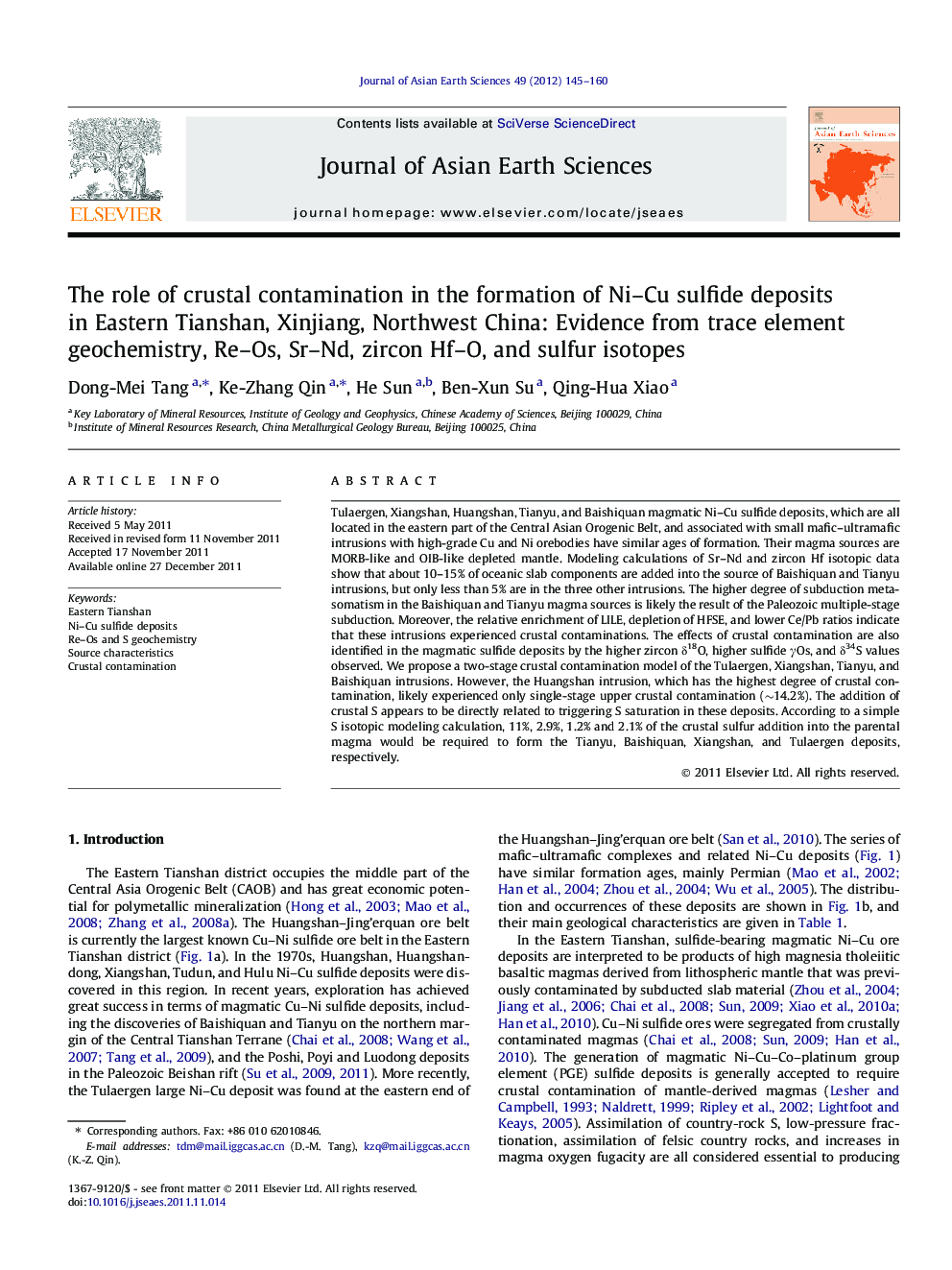| کد مقاله | کد نشریه | سال انتشار | مقاله انگلیسی | نسخه تمام متن |
|---|---|---|---|---|
| 4731510 | 1640415 | 2012 | 16 صفحه PDF | دانلود رایگان |

Tulaergen, Xiangshan, Huangshan, Tianyu, and Baishiquan magmatic Ni–Cu sulfide deposits, which are all located in the eastern part of the Central Asian Orogenic Belt, and associated with small mafic–ultramafic intrusions with high-grade Cu and Ni orebodies have similar ages of formation. Their magma sources are MORB-like and OIB-like depleted mantle. Modeling calculations of Sr–Nd and zircon Hf isotopic data show that about 10–15% of oceanic slab components are added into the source of Baishiquan and Tianyu intrusions, but only less than 5% are in the three other intrusions. The higher degree of subduction metasomatism in the Baishiquan and Tianyu magma sources is likely the result of the Paleozoic multiple-stage subduction. Moreover, the relative enrichment of LILE, depletion of HFSE, and lower Ce/Pb ratios indicate that these intrusions experienced crustal contaminations. The effects of crustal contamination are also identified in the magmatic sulfide deposits by the higher zircon δ18O, higher sulfide γOs, and δ34S values observed. We propose a two-stage crustal contamination model of the Tulaergen, Xiangshan, Tianyu, and Baishiquan intrusions. However, the Huangshan intrusion, which has the highest degree of crustal contamination, likely experienced only single-stage upper crustal contamination (∼14.2%). The addition of crustal S appears to be directly related to triggering S saturation in these deposits. According to a simple S isotopic modeling calculation, 11%, 2.9%, 1.2% and 2.1% of the crustal sulfur addition into the parental magma would be required to form the Tianyu, Baishiquan, Xiangshan, and Tulaergen deposits, respectively.
Journal: Journal of Asian Earth Sciences - Volume 49, 30 April 2012, Pages 145–160